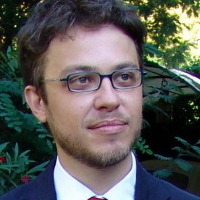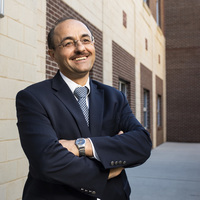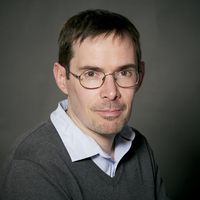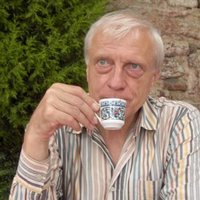
Hans-Christian Jasch
Dr. iur. Hans-Christian Jasch is a lawyer and legal historian by training. He holds a PhD in legal history from the Humboldt University in Berlin.
Parallel to his academic research on law and public administration in Nazi-Germany, remembrance policy and mass-atrocity prevention, Dr. Jasch works as a lawyer in the public administration for the German Federal Ministry of Interior in the field of public security.
From May 2014 to July 2020 he was the Director of the Memorial and Educational Site House of the Wannsee Conference in Berlin following the publication of his critically acclaimed book in 2012 on the Nazi-state-secretary Wilhelm Stuckart, who represented the Ministry of interior at the Wannsee Conference.
Earlier he worked as a seconded national expert on preventing violent radicalisation for the counter-terrorism unit of the European Commission in DG Home Affairs from 2007 to 2011.
In 2016/17 he co- authored books on the Participants of the Wannsee-Conference, the Nuremberg Laws, Public administration and the Holocaust, a book on how the German Justice system dealt with Holocaust crimes after 1945, a book on amateur war-fotography during the German attack on Poland and an exhibition and a catalogue called: “Crimes Uncovered” on “The First Generation of Holocaust Researchers”.
His most recent contribution looks at the murdering state and its institutions during the T4-murder campaign and the Holocaust.
Parallel to his academic research on law and public administration in Nazi-Germany, remembrance policy and mass-atrocity prevention, Dr. Jasch works as a lawyer in the public administration for the German Federal Ministry of Interior in the field of public security.
From May 2014 to July 2020 he was the Director of the Memorial and Educational Site House of the Wannsee Conference in Berlin following the publication of his critically acclaimed book in 2012 on the Nazi-state-secretary Wilhelm Stuckart, who represented the Ministry of interior at the Wannsee Conference.
Earlier he worked as a seconded national expert on preventing violent radicalisation for the counter-terrorism unit of the European Commission in DG Home Affairs from 2007 to 2011.
In 2016/17 he co- authored books on the Participants of the Wannsee-Conference, the Nuremberg Laws, Public administration and the Holocaust, a book on how the German Justice system dealt with Holocaust crimes after 1945, a book on amateur war-fotography during the German attack on Poland and an exhibition and a catalogue called: “Crimes Uncovered” on “The First Generation of Holocaust Researchers”.
His most recent contribution looks at the murdering state and its institutions during the T4-murder campaign and the Holocaust.
less
Related Authors
Noel B. Salazar
KU Leuven
Judith L Green
University of California, Santa Barbara
Josiah Heyman
University of Texas at El Paso (UTEP)
Andreas Umland
National University of "Kyiv-Mohyla Academy"
Guri Schwarz
University of Genova
Naim Kapucu
University of Central Florida
François Soyer
University of New England - Australia
Alejandra B Osorio
Wellesley College
Nelson Graburn
University of California, Berkeley
Martin van Bruinessen
Universiteit Utrecht
InterestsView All (46)










Uploads
Papers by Hans-Christian Jasch
From Otto Dov Kulka's Foreword:
There is a wide range of research in historiography on the significance
of the Wannsee Conference for the unfolding of the “Final Solution.”
The present volume of biographical studies by leading historians on
the participants of the conference, which dealt with the planning and
implementation of the so-called “Final Solution of the Jewish Question,”
is unquestionably an important achievement in the field of research on
the Nazi perpetrators.
Particularly valuable is the exceptional concept of bringing together
these studies in one volume. Furthermore, in addition to examining
the participants’ individual roles at the conference, the chapters range
across their complete biographies. In each case, the reader is led back
to the origins of their political activities, generally in the wake of the
First World War and during the formative stages of the Nazi movement.
One can view the new volume as a continuity and extension of
Ulrich Herbert’s innovative approach in his acclaimed major biography
of Werner Best on Radicalism, Ideology and Reason,1 as well as Hans-
Christian Jasch’s on Wilhelm Stuckart, and the Judenpolitik.
She was a pupil of Robert Koch and one of the pioneers of modern cancer research as a cytologist who left Germany before WWI to work in Yale and Princeton where her career was terminated after allegations of being a German spy preparing biological warfare by poisoning water supplies in New Haven. Upon her return to Germany in 1919 she had to assert herself in a male dominated research environment under precarious conditions while working on top-level research and establishing a centre of excellence for cell research. She became a role model especially for women who pursued a university career.
Jewish researchers attempted to counteract this complete “eradication”
even as the murders were being committed. They documented this event by gathering sources to visualize and remember the scale of the crimes and the extermination of Jewish life. In exile, as well as in life threatening conditions in the ghettos and camps, they carried out research, collected facts and preserved evidence of the crimes. They founded archives and committees that continued their work after the end of the war. They wanted to document who was murdered and to identify the killers. They wanted to remember the dead, to fathom the crimes, to bring the perpetrators to justice and, at the same time, they wanted to make future genocides impossible.
Driven by varying motives, these women and men from a variety of professional backgrounds dedicated themselves to the research and the commemoration of the Holocaust. They thereby denied the criminals their final triumph: the murder of millions did not fall into oblivion and did not go without consequence.
Books, memorial sites, research institutes, trials and, last but not least, the Universal Declaration of Human Rights and the UN Genocide Convention of 1948 were results of their passionate dedication. Our contemporary knowledge of the Holocaust and the basis of our remembrance of the Holocaust are based on this legacy.
He grew up in Wiesbaden as a typical representative of the "Kriegsjugendgeneration" and joined right wing circles already during his adolescence. He was a successful lawyer who sacrificed his career as a judge in order to work for the Nazi party and was rewarded with the post of a state secretary in the Prussian Ministry of Culture, Science and Education in spring 1933 where he was key to purging schools and universities from politically unwanted and "non-aryan" teachers and professors. After having fallen into disgrace with his superior, Minister Bernhard Rust, he managed to reposition himself for a new assignment in the Reich Ministry of Interior after convincing Hitler in a meeting in January 1935.
Stuckart received a mild sentence during the Ministries Trial in Nuremberg in 1949 and went back into regional politics for the right wing SRP and BHE in Lower Saxony before dying in a car accident in 1953.
- KARL KROESCHELL: Rechtsgeschichte Deutschlands im 20. Jh., Göttingen: Vandenhoeck & Ruprecht 1992, XVII, 261 S.
- FRIEDRICH EDEL: Rechtsgeschichte. Ein Lehrbuch, Bd. II: Neuzeit, Heidelberg: C.F. Müller, Jur. Verl, 1993, XXI, 304 S. - UWE WESEL: Geschichte des Rechts. Von den Frühformen bis zum Vertrag von Maastricht, München: C. H. Beck 1997, 581 S.
My review seeks to critically assess this study and put it in the wider context of similar research in Germany conducted since the late 1980ies.
Schulte, Jan Erik; Wildt, Michael: Die SS nach 1945. Entschuldungsnarrative, populäre Mythen, europäische Erinnerungsdiskurse. Göttingen:
V&R unipress 2018. ISBN: 978-3-8471-0820-7; 451 S.
Eichmüller, Andreas: Die SS in der Bundesrepublik. Debatten und Diskurse über ehemalige SSAngehörige 1949–1985. Berlin: De Gruyter Oldenbourg
2018. ISBN: 978-3-11-057012-0; VI, 320 S.